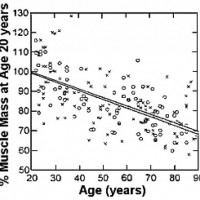“I don’t want to lift weights because it will make me look big and bulky”
The above statement is a misconception shared by both male and female gym goers, although it tends to be more common among females.
Resistance training comes in many formats
 There is a difference between resistance training for function and resistance training specifically for muscle mass gains. The aims of functional resistance training are to improve strength, endurance, and mobility as the foundation for successful and energetic participation in occupational efforts, recreational pursuits, and family activities, thus improving quality of life. This differs considerably to training with the intention of gaining large volumes of muscle mass (known as hypertrophy training), as is typified by the sport of body building. Not only are the goals of these two forms of resistance training very different, but so too is the structure of training programs – what exercises you should do, what loads or resistances you should be working with, how many sets and repetitions, and so on. If the content of your training program has not been tailored towards hypertrophy, then resistance training will not cause you to look excessively muscular or bulky.
There is a difference between resistance training for function and resistance training specifically for muscle mass gains. The aims of functional resistance training are to improve strength, endurance, and mobility as the foundation for successful and energetic participation in occupational efforts, recreational pursuits, and family activities, thus improving quality of life. This differs considerably to training with the intention of gaining large volumes of muscle mass (known as hypertrophy training), as is typified by the sport of body building. Not only are the goals of these two forms of resistance training very different, but so too is the structure of training programs – what exercises you should do, what loads or resistances you should be working with, how many sets and repetitions, and so on. If the content of your training program has not been tailored towards hypertrophy, then resistance training will not cause you to look excessively muscular or bulky.
The role of nutrition
 To gain muscle mass, a positive energy balance must be maintained. This is usually achieved by adding calories to the diet; adding anywhere between 500–1500 calories per day to a normal diet can be considered the norm for gaining muscle. It must also be noted that these are not typically the “fun” type of calories like jam sandwiches and muffins…think more along the lines of chicken and spinach! This is because increases in muscle mass require increased consumption of protein – at levels of approximately 1.5–2 g per kg of bodyweight – in order to provide the body with the necessary nutrients to repair existing muscle fibres and create new muscle fibres. To put it simply, substantial gains in muscle mass through resistance training do not come about without a big nutrition push. It requires precise timing and planning of meals, and more frequent eating (especially focusing on foods high in protein) than the average adult diet.
To gain muscle mass, a positive energy balance must be maintained. This is usually achieved by adding calories to the diet; adding anywhere between 500–1500 calories per day to a normal diet can be considered the norm for gaining muscle. It must also be noted that these are not typically the “fun” type of calories like jam sandwiches and muffins…think more along the lines of chicken and spinach! This is because increases in muscle mass require increased consumption of protein – at levels of approximately 1.5–2 g per kg of bodyweight – in order to provide the body with the necessary nutrients to repair existing muscle fibres and create new muscle fibres. To put it simply, substantial gains in muscle mass through resistance training do not come about without a big nutrition push. It requires precise timing and planning of meals, and more frequent eating (especially focusing on foods high in protein) than the average adult diet.
Hormonal differences in men and women
You don’t need me to tell you that, physiologically speaking, men and women are quite different! One of the primary ways men and women differ is in the concentrations of our sex hormones. Testosterone is an anabolic hormone that is responsible for promoting tissue growth, and thus is very important in the development of muscle mass. Testosterone is up to 20 times lower in females compared to males, and this is a major reason why females are less inclined to gain muscle mass through resistance training.
 Muscle composition
Muscle composition
Males and females also tend to differ in muscle composition, that is, the proportion of different muscle fibre types in a muscle or muscle group. Nevertheless, on average, both men and women lose ~250 g of muscle per year from the age of about 35-40. Loss of muscle mass has a multitude of negative health consequences, and if this decline isn’t slowed, you will see continual reductions in your capacity to perform your daily movements and activities safely and efficiently.
Thankfully, a large body of scientific research presents a clear path forward: for women as much as for men, it is crucial for our health that we continue to take part in regular resistance training as we age. Resistance training does not equal “big and bulky muscles”, unless you are pursuing a bodybuilding regimen! In addition, women who undertake regular resistance training benefit not just from improved muscle function, but also enhanced fat loss, and decreased risks of osteoporosis and cardiovascular disease.
Written by Jack Hoffman, Accredited Exercise Physiologist.
